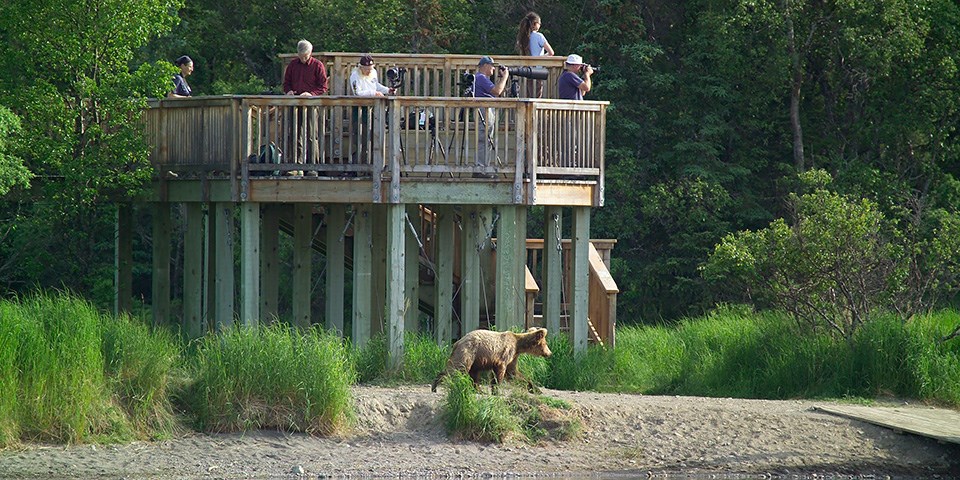Viewing Bears (U.S. National Park Service) (original) (raw)
Article

Visitors watch a brown bear pass by a viewing platform in Katmai National Park and Preserve.
NPS Photo
Bears are part of what makes national parks wild and special. Seeing a bear is often a matter of luck, but you can increase your chances if you know where and when to look. The best places to see bears are those locations where they can find food at that time of year. For example, bears are often in meadows digging up grasses and roots in the spring, while in the fall you may see bears high in oak trees consuming vast quantities of acorns. Even if you don't see a bear, you can look for signs of them—overturned rocks and stumps, torn-up rotten logs, scratch marks and bits of fur on tree bark, scat, and tracks in snow or mud.
If you do see a bear, remember you are a visitor in their home. Your behavior may have life or death consequences for a bear. Follow the steps below for a more enjoyable visit and remember that bears are wild animals. Like any wild animal, they can be dangerous and are sometimes unpredictable. Attacks on humans are rare, but they can occur.
Viewing Etiquette
- Respect a bear's space. Binoculars and spotting scopes allow you to view bears without getting too close.
- Never approach, crowd, pursue, or displace bears. If a bear changes its behavior because of your presence, you are too close! Also, check with the park you are visiting for viewing distance regulations, which may vary based on species and terrain. For example, Yellowstone National Park requires visitors to keep a distance of at least 100 yards (300 feet); Shenandoah National Park recommends 200 feet or more.
- Stay in groups and minimize noise and movement. However, in areas of low visibility or when you're out on the trail, reduce chances of surprise encounters by staying alert and talking calmly to identify yourself as a human, not another animal.
- Stay on designated trails whenever possible.
- Leave "orphaned" or sick bears alone. Young animals that appear alone usually have a mother waiting nearby. Never get between a mother and her cub.
- Leave pets at home.
- Give bears room to pass. Do NOT run from a bear. Read more about staying safe around bears.
- Let bears eat their natural foods. Prevent bears from getting human food by learning about food storage requirements.
- You are responsible for your safety and the safety of wildlife. If a bear approaches you, it is your responsibility to move away and maintain a safe distance.
Tags
Last updated: September 13, 2021